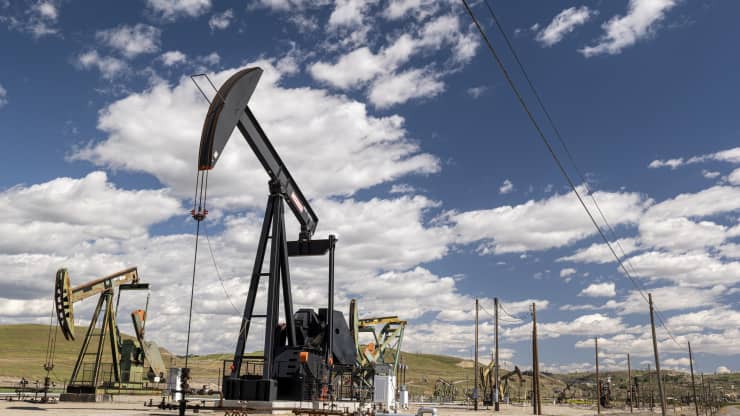Oil prices could climb higher despite the U.S. and other major consumers releasing millions of barrels of oil from their reserves to try to keep energy prices down, one analyst told CNBC.

Source: CNBC
“It’s not going to work simply because the strategic petroleum reserve — any country’s strategic petroleum reserve is not there to try to manipulate price,” Stephen Schork, editor of the Schork Report, said Wednesday on CNBC’s “Squawk Box Asia.”
Strategic petroleum reserves exist only to offset short-term, unexpected supply disruptions, he explained.
“There’s a considerable amount of bets out there that we will see $100 a barrel oil,” Schork said, adding it could happen as early as the first quarter of next year, especially if there is a cold winter in the Northern Hemisphere.
Calming oil prices
Oil prices have jumped more than 50% this year, with demand outstripping supply as more countries emerge from national lockdowns and severe restrictions imposed since last year due to the pandemic. Resumption of international travel as more nations re-open borders is also boosting jet fuel demand.
Global benchmark Brent surpassed the psychologically key threshold of $80 per barrel in October and prices have held near that level. As of Wednesday afternoon in Asia, the international contract traded near $82.50.
U.S. President Joe Biden announced Tuesday that the U.S. will release 50 million barrels from its reserves as part of a global effort by energy-consuming countries to calm the rapid rise in fuel prices. Of that total, 32 million barrels will be an exchange over the next few months, and 18 million barrels will be an acceleration of a previously authorized sale.
Other countries that made the joint commitment include China, India, Japan, South Korea and the United Kingdom.
So far, the U.K. has agreed to release about 1.5 million barrels while India committed to 5 million barrels. China, Japan and South Korea have yet to announce specific numbers.
“We are talking 50 million barrels coming out of the United States, potentially another 50 from our partners. That’s 100 million barrels of oil — that is one day’s worth of a global demand for crude oil,” Schork said.
Vivek Dhar, a mining and energy commodities analyst at the Commonwealth Bank of Australia, was more conservative in his estimates. He predicted in a Wednesday note that the number of barrels released by the six oil-consuming countries could amount to “just north of 70 million,” as the release of oil stockpiles from the other countries may be “relatively tame.”
The world consumed 97.53 million barrels of oil per day this year, up from 92.42 million barrels a day in 2020, according to the U.S. Energy Information Administration. In 2022, that figure is set to rise to 100.88 million barrels a day.
“It is a clear sign of desperation that this is the only tool in the box and it is not going to work. I do believe the market will call the U.S.’s bluff on this and we’re likely to see higher prices rather than lower prices one month from now,” Schork said.
The U.S. should consider bringing American producers to the table and ask them to ramp up output to offset the supply imbalance, he added.
Commonwealth Bank’s Dhar said a rebound in oil prices on Tuesday indicated that “markets were underwhelmed with the co-ordinated release of strategic oil reserves.”
Showdown with OPEC+
The latest development came after OPEC and its oil-producing allies decided not to pump more oil despite crude prices climbing to multi-year highs and U.S. pressure to help cool the market.
Under its current output plan, the group, known as OPEC+, will gradually increase oil production by 400,000 barrels per day each month. They are due to meet again next month.
“There have, as of yet, been no signs that OPEC+ is reconsidering its plan,” Eurasia Group analysts said in a note dated Nov. 22, prior to Biden’s announcement overnight. A large-scale stock release by oil consumers before OPEC+ meets may prompt a countermove by the group, resulting in a “disruptive standoff,” they said.
“Under such conditions, countervailing moves by each side are likely to lead to increased volatility, producing seesawing oil prices and added uncertainty,” the Eurasia Group analysts said.
“This would neither alleviate consumer price pressure nor give producers the required stability to ensure steady and reliable supply to a global economy that is still grappling with the worst pandemic in a century,” they added.

